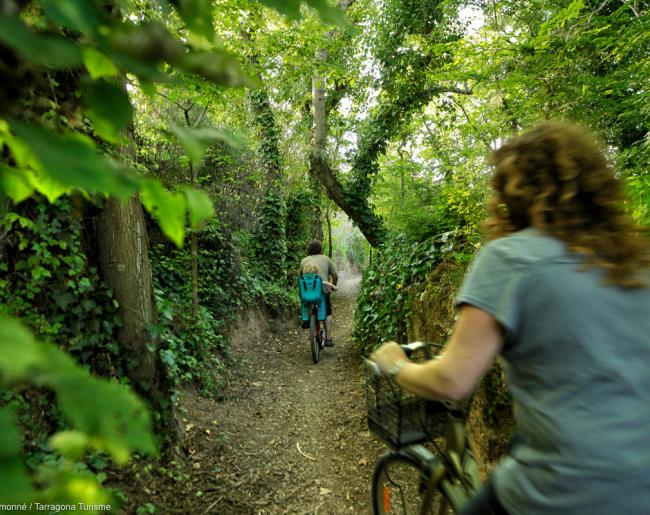
© Rafael López-Monné
Since it was founded, Tarragona has been connected to the surrounding countryside and villages by paths, some of which are as old as the city itself. Tarragona’s network of public paths consists of old cart tracks, bridle paths, trails and other more modern roads.
The ancient paths are the threads of memory; they store the secrets of history and of the humble people that used them: country folk travelling to market, serving girls at large country estates or young boys travelling along to sell their fish. These are paths where, in the early hours of the morning, ice would come down from the Prades Mountains to be used to lower fevers or to make iced drinks laced with brandy; and they are also the routes that brought soldiers here from France.
Many are modest and unpaved and smell of rich earth when it rains. These paths store an important part of the city's memory. They are a truly remarkable part of our heritage.
These paths are ideal for walks, hikes, bicycle and horse rides and for interacting with the landscapes, horizons and heritage surrounding the city.
75 km of paths have been signposted and their traditional names have been restored. Some are old ‘royal highways’ that connected villages to one another, others ran to country estates and hunting grounds and others, like the coastal path or coast guard path, were used to safeguard the region against danger approaching by sea and keep a watchful eye for smugglers.

© Rafael López-Monné
The waymarked Paths of Tarragona network aims to become a truly green network of paths to be enjoyed using alternative forms of travel; it is a network that we hope will become increasingly consolidated as it expands.
These paths let Tarragona’s inhabitants and visitors walk, enjoy and have fun discovering Roman quarries, medieval towers and honey-coloured cliffs.
The Paths of Tarragona network is indentified with yellow trail markers, except for the stretches that coincide with the GR-65.5, GR-92 and GR-172 (long-distance) and PR (short-distance) routes which follow the signs used by the FEEC (Catalan Excursion Association): white and red markers for the GR routes and white and yellow markers for the PR routes.

© Rafael López-Monné
The idea of travelling on foot between the two rivers that flow into the sea in Tarragona has given rise to a fantastic route that demonstrates the wonderful heritage of the municipality: Roman aqueducts, medieval country houses, Catalan Modernist domes, towers built as a defence against the dreaded Barbary pirates, quarries with needle-like monoliths, bountiful vegetable gardens, estuaries bursting with life, villages that look like castles, bays where pine trees still lower their branches to bathe and the remains of the customs guards' barracks where couples would gaze out to sea together, though not romantically.
The total route covers 34 km. The journey to Gaià can be made on foot or by bicycle. However, the journey back along the coast is only suitable for walkers. It is a good idea to do the route in stretches and to use the public transport system (intercity bus or train) to return.
Download a description of the route
Download the track (route georeferenced by GPS)




